Summer Heat Is Lasting Longer than Summer
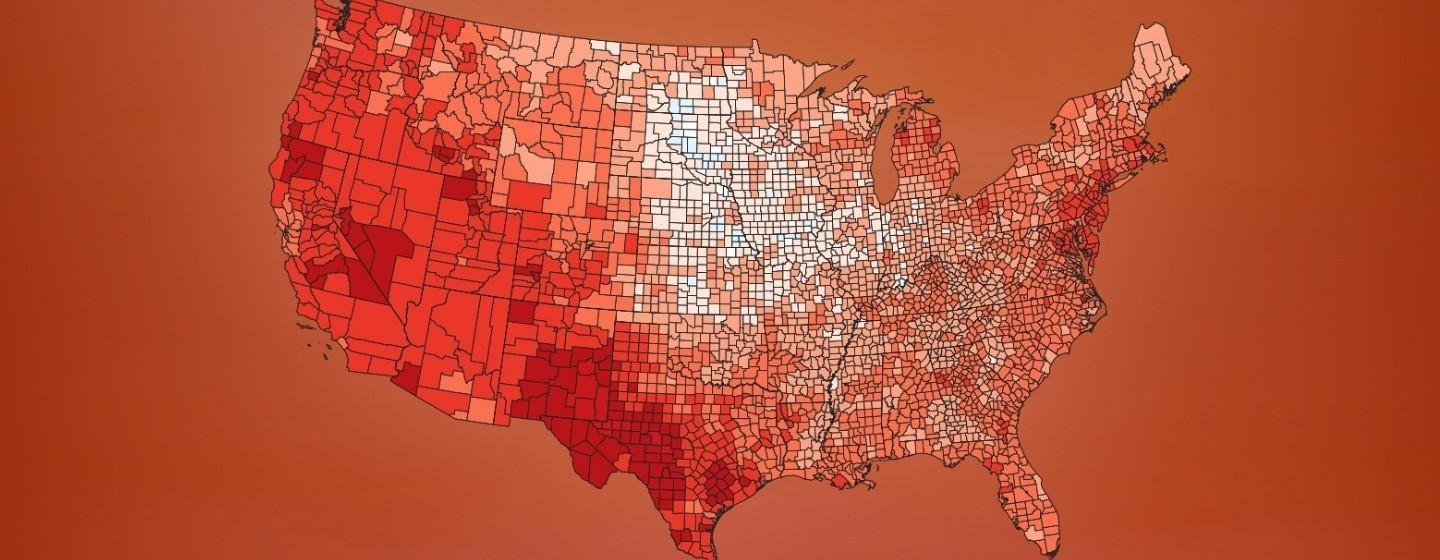

Memorial Day is the unofficial start of summer in the U.S. Labor Day is the unofficial end of summer. Between those holidays, you find beaches, lakes, vacations, picnics, snow cones, family reunions, Fourth of July fireworks and so on.
If you want a more scientific look at summer, the season officially begins on the summer solstice (June 20 or 21 in the Northern Hemisphere) and lasts until the autumnal equinox (about September 22 or 23). But if it feels like summer is lasting much longer than that, you’re right. Summer temperatures are not confined to just 90+ days anymore.
A 2025 study by the policy-neutral nonprofit group Climate Central shows summers have warmed in Raleigh-Durham by an average of 4.4 degrees since 1970. Across the nation, summer days have warmed up by 2.6 degrees in 97% of 242 cities analyzed.
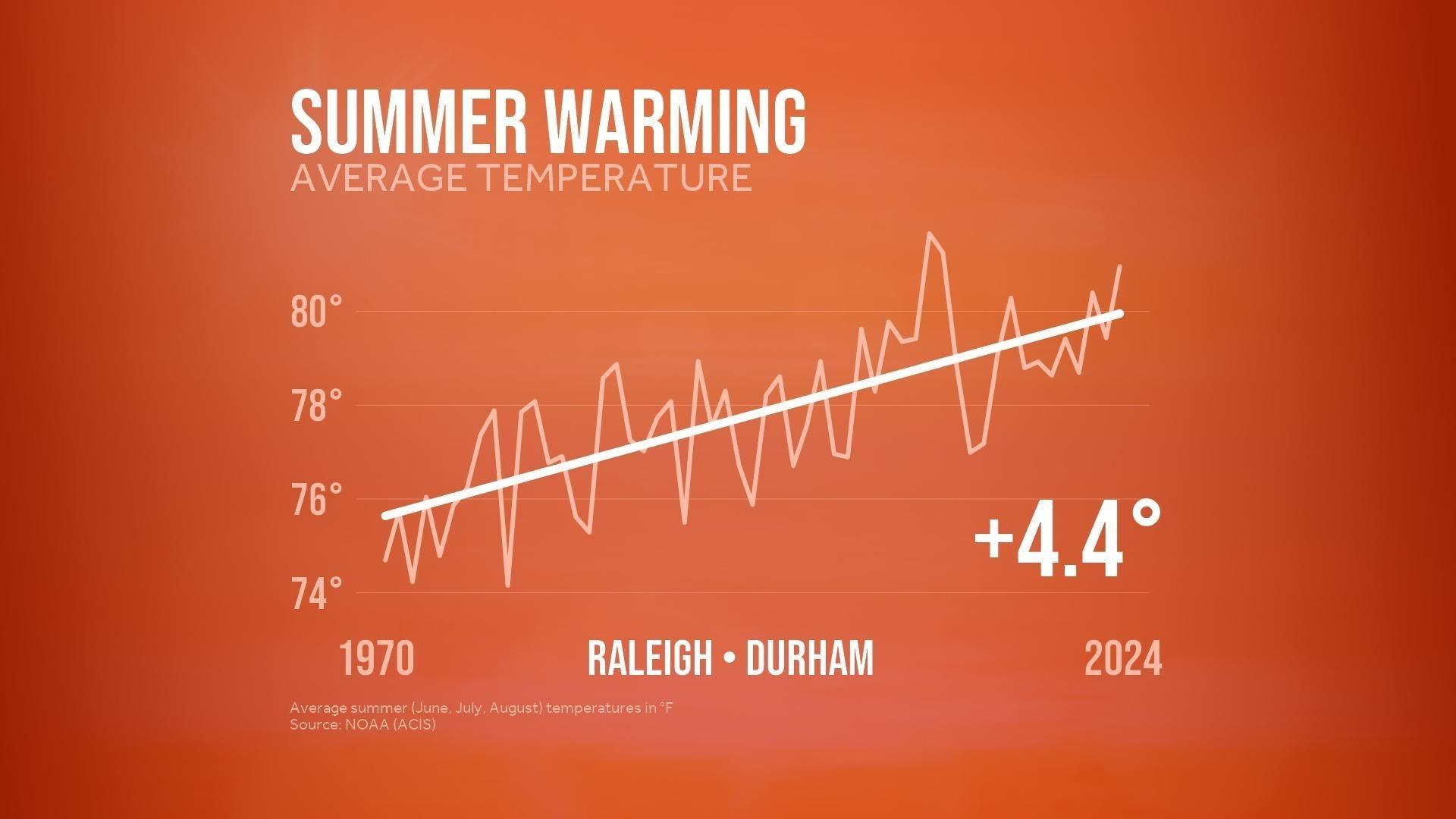
In addition, the temperatures that used to kick off the warmest three months of the year are expanding beyond what we (and the calendar) define as summer. The data shows North Carolina’s Piedmont region experienced 39 more days of hotter-than-normal summer temperatures than 1970.
The study also shows summers are heating up in every region of the country. Southern states and those in the Southwest have seen the most warming, gaining roughly two additional weeks of hot summer temperatures.
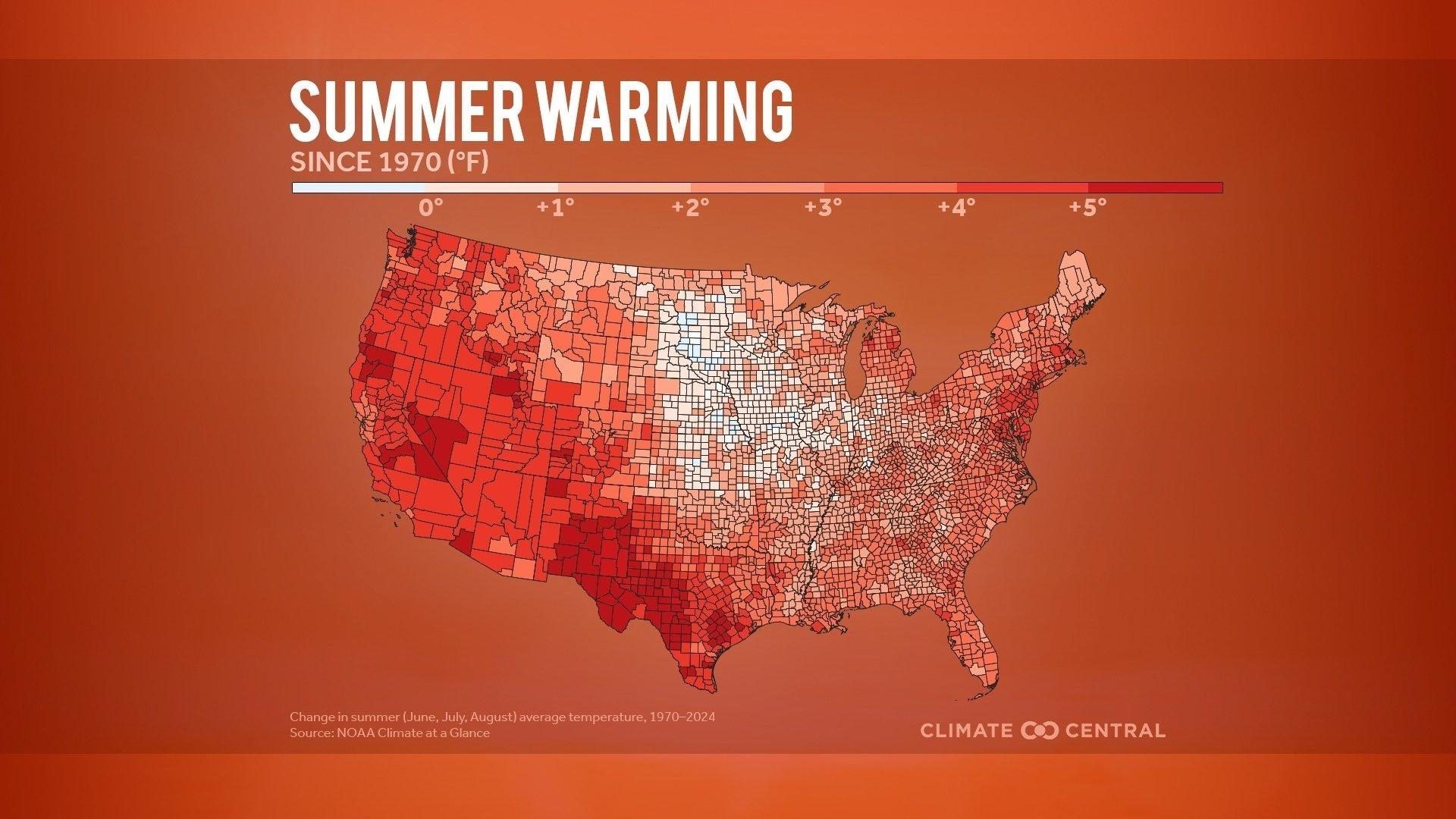
What makes those hotter daytime temperatures even worse is that summer nights aren’t cooling off. The data shows summer evenings have warmed by 4.6 degrees since 1970. That means daytime temperatures are starting to warm from a higher evening temperature. It doesn’t take as much sunshine to make the day even warmer.
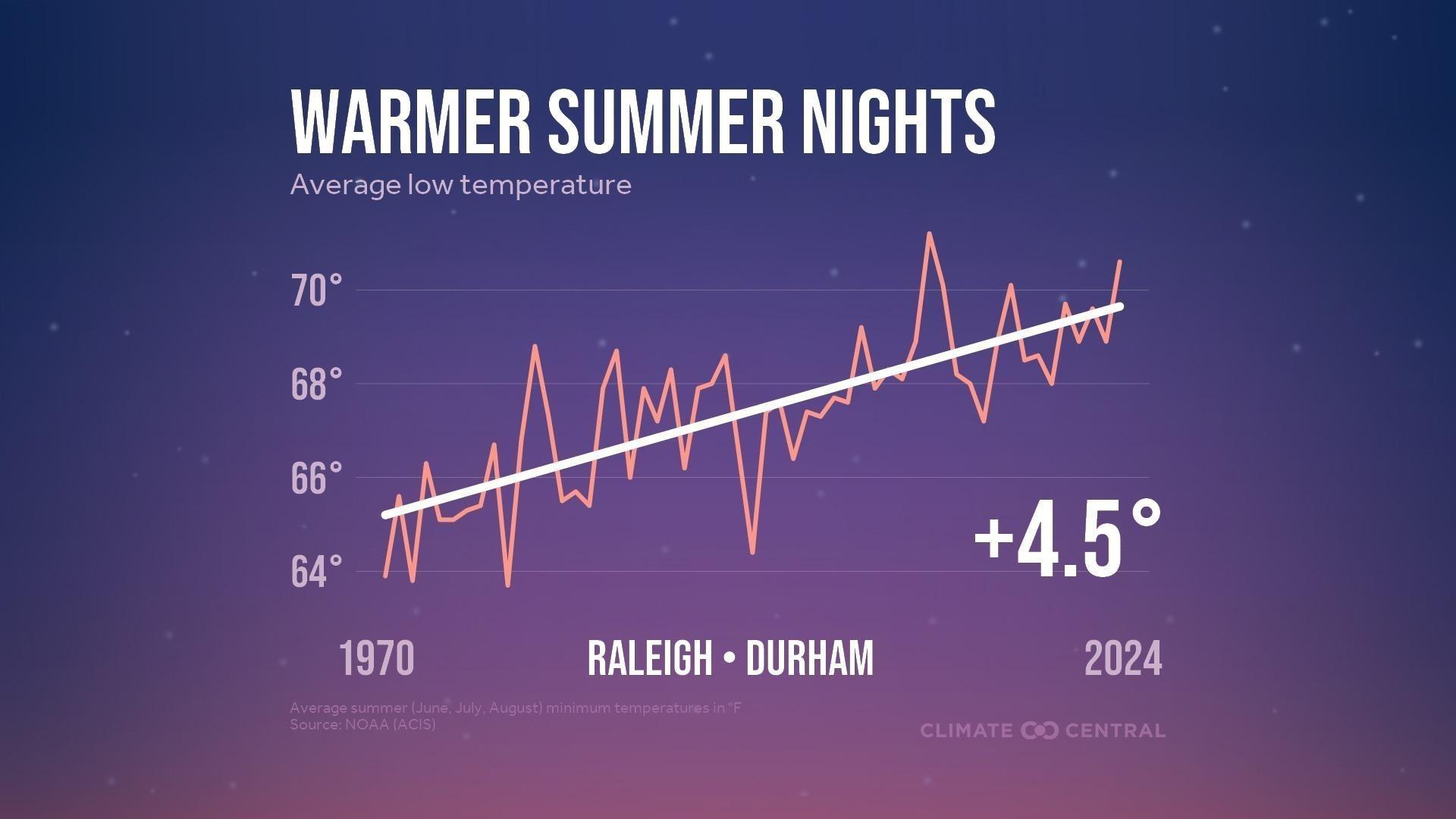
Climate change, or the overall increase in global temperatures, is creating new summer weather trends. The increase in greenhouse gases through the burning of fossil fuels traps heat in the atmosphere and raises global temperatures. The past 10 years have been the hottest on record.
Summer thunderstorms used to provide a break from the heat, but it turns out those storms are also changing. The data shows summer thunderstorms are getting worse.
Researchers used National Oceanic and Atmospheric Administration (NOAA) weather station data and divided the Raleigh-Durham area’s total annual rainfall by their total hoursof annual rainfall. That approach quantifies how much rain fell for each hour it was raining each year. In other words, it shows just how intense the rainfall was.
It turns out the hourly rainfall intensity in the area increased by 22% between 1970 and 2024.
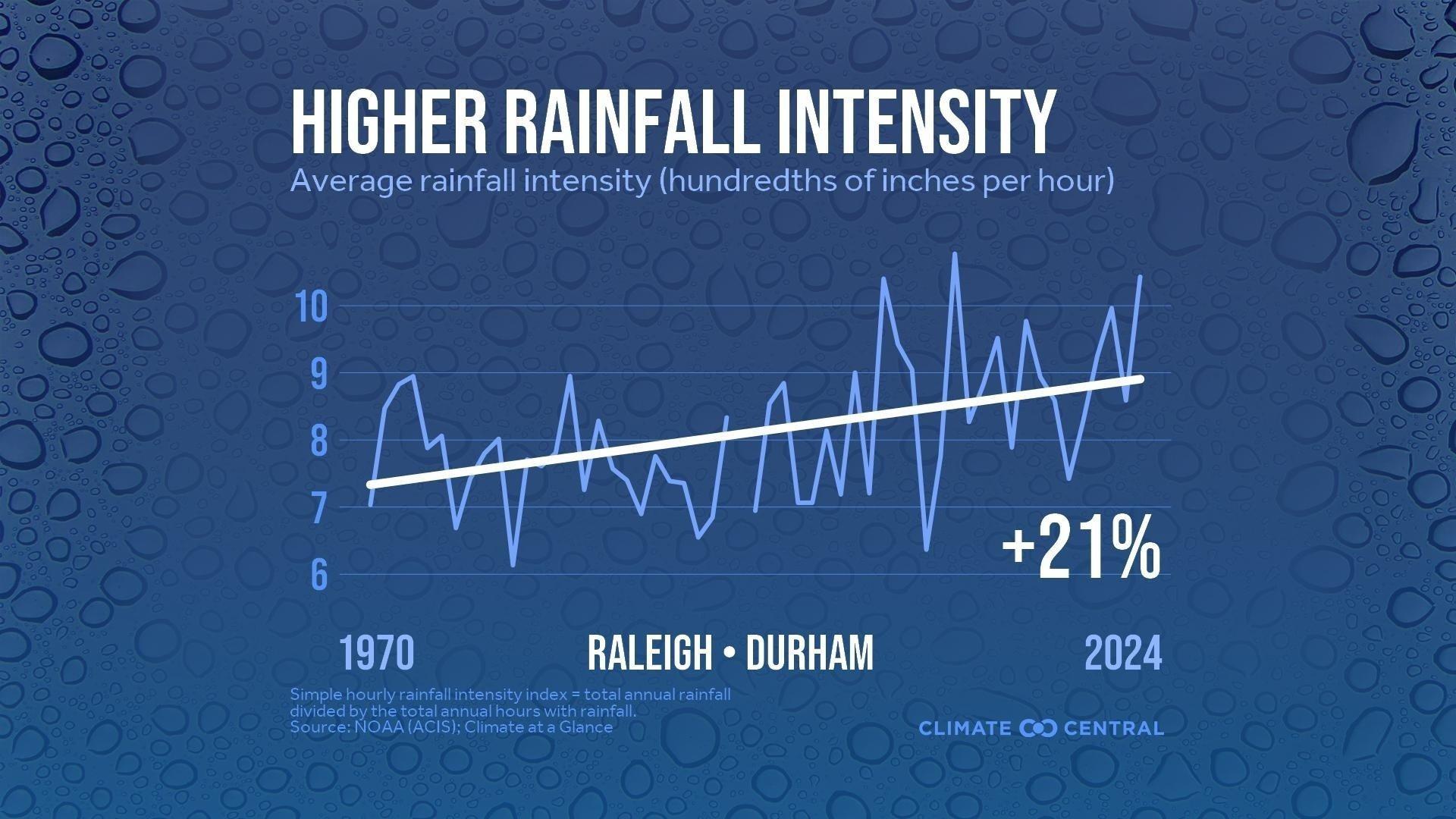
The longer, hotter summers that also bring stronger storms are challenging how communities cope with summer. Air conditioning can strain power grids. High temperatures strain plants and animals as well as people. But the first step is simply to prepare for longer summers because they are not an anomaly anymore—they are here.
Scientists are mapping urban heat to save lives in overheated cities.